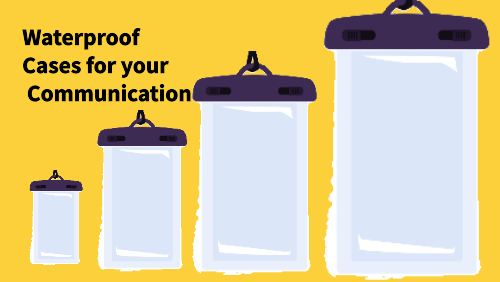Emergency communication devices for kayakers are non-negotiable lifelines when unpredictable weather strikes or you’re stranded in remote waters. From compact Personal Locator Beacons (PLBs) to waterproof VHF radios, equipping yourself with the right tools ensures you stay connected and safe.
This guide unpacks the must-have devices every paddler needs to navigate emergencies confidently—because preparation could save your life
Why Communication Is Vital For Kayaking Safety

Before you even get your kayak wet, let someone know your plans. I can’t stress enough how crucial this is. Your shore contact should know your route, who’s in your group, and when you expect to return.
This isn’t just about keeping them in the loop; it’s also about setting up a safety net. If you don’t check in on time, they can raise the alarm, setting a search and rescue in motion if needed. Now, in terms of equipment, you’ve got everything from basic whistles to high-tech satellite gadgets that can summon help at the push of a button.
The Different Types Of Communication Devices For Kayakers

Understanding your options is key, and that’s going to include devices suited for a range of environments. From calm lakes to coastal waters, each setting might demand different gear.
Keep in mind that this is about balance; carrying every device under the sun isn’t practical or necessary, but you want enough to ensure you can reach help if you need it. That’s the strategy I like to leverage: smart preparation, not overkill.
How To Choose The Best Communication Device For Your Kayaking Style
You can always adjust your approach down the road, but as a start, choose something that resonates with you and fits the type of kayaking you do. There’s a lot of opportunity in understanding the tech that’s available to you.
In the next section, we’ll be talking about how to ensure your group sticks together and remains within communication range using some of these gadgets. That’s right, effective group management is more than just sticking close; it’s about having the right tools to alert and communicate when it’s most crucial.
Effective Communication Tools for Kayakers To Ensure Group Cohesion

It’s important to maintain group cohesion when paddling. It’s not just about staying physically together; it’s also about clear, effective communication.
You want everyone to be on the same page, especially when navigating through tricky waters or in the event of an emergency.
Consequently, you’d want to familiarize yourself with the tools that can help foster group cohesion.
1. The Power of a Whistle

Keeping the group together within communication range, and preferably voice range, is crucial. If you’re venturing into an area with lots of bends or obstructions, voice communication can quickly become impractical. In such cases, having a practical, audible signal is key.
This is where a good, loud whistle comes into play. Attach one to your personal flotation device (PFD), and you’ve got a simple, yet effective way to get everyone’s attention, fast.
2. The Benefits of a Marine VHF Radio

In my opinion, for more extensive communication needs, especially when managing larger groups or when in proximity to other marine traffic, a Marine VHF radio isn’t just nice to have, it’s essential. Communication between markers or with nearby vessels can be lifesaving.
And guess what? They are also useful for weather updates and may be crucial if someone needs rescue.
How to Protect Your Communication Gear

Now, a quick word on gear protection – water is not a friend to most electronic devices. Even with devices advertised as water-resistant, it’s wise to ensure extra prevention. Consider waterproof cases for your VHF radios and any other communication gear you’re carrying.
Check for vulnerabilities like ports or openings and utilize waterproof containers if needed. It’s a simple step that could mean the difference between a device that works when you need it and one that’s been rendered useless by water damage.
How to Plan and Prepare for Your Kayaking Trip
Finally, let’s touch on planning and preparation – don’t worry too much about memorizing all this right now. You can always adjust your approach down the road. For now, choose something that resonates with you and meets your kayaking needs.
If you’re paddling in a coastal region, for instance, a Marine VHF radio might be the way to go. If it’s a calm lake, perhaps those paddle signals and whistles are enough. It’s all about matching your gear to the environment.
Advanced Communication Equipment for Kayak Excursions (Tech to the Rescue)
When you’re kayaking, especially in remote or challenging environments, being able to communicate during an emergency doesn’t just provide peace of mind – it could be a lifesaver.
Technology designed for aquatic adventures can enhance your ability to signal for help or just check in with your group.
So, what are some of the go-to devices?
Mobile Phone: How to Use Your Mobile Phone on the Water

First up, there’s your trusty mobile phone. Now, I’m sure you’re wondering: ‘Can I really take my phone into the great wet beyond?’ You can, provided it’s in a waterproof case like an Aquapac, which keeps your device dry while preserving touchscreen functionality.
Just remember, this isn’t just about keeping your phone from swimming; it’s also about ensuring it resists water pressure and knocks if you capsize. Getting additional waterproofing and securing your phone to your person or kayak makes a world of difference in accessibility and reducing the risk of loss.
PLBs vs EPIRBs: Which One to Choose?

Then there’s the distinction between Personal Locator Beacons (PLBs) and Emergency Position Indicating Radio Beacons (EPIRBs). While both can be lifesavers, PLBs are generally more compact, designed for personal use, and good for all environments.
EPIRBs, on the other hand, are intended for maritime use, are often larger, and are designed to float upright to ensure optimal signal transmission if you’re going out far from shore.
Satellite Messengers: Stay Connected Anywhere

Satellite messengers, like the SPOT Gen3, come into play when you want real-time GPS tracking or to send pre-written messages to let contacts know you’re okay. These devices operate via a constellation of communication satellites, so they’re reliable even where your mobile phone isn’t.
However, remember that while SPOT Gen3 offers features like ‘Check In’ and ‘Help/SPOT S.O.V,’ it isn’t a substitute for immediate emergency services communication as PLBs are.
Visibility Devices: Shine a Light in the Dark

Visibility in emergencies is also critical. That’s why including devices such as waterproof emergency signaling strobes, laser rescue flares, signal mirrors, and electronic distress flares in your gear is a good strategy. These gadgets can be a beacon to rescuers in low-light conditions or provide a long-distance SOS.
Traditional Flare Kits: Don’t Leave Them Behind

Don’t forget the traditional flare kit; while they may seem outdated next to electronic options, pyrotechnic flares are still a requirement in many offshore scenarios and are highly visible. Just be sure to check expiration dates and store them securely – you want them functional if the time comes.
Making the Right Call: Selecting Communication Devices for Every Kayak Trip
Now, you’re well-equipped with the information on a range of devices to keep you connected and safe on your kayaking adventures.
Remember, when choosing your safety gear, it’s not a one-size-fits-all situation. Your choice should depend on the specifics of your trip – the remoteness, the environment, and what you’re most comfortable using.
Smartphone: Your Everyday Companion

For serene lake excursions where cell service is reliable, your smartphone in a waterproof case might suffice. However, for those wild rides through remote rivers or open seas, investing in satellite messengers or a PLB can be a lifesaver.
Marine VHF radios offer a middle ground, practical for voyages where you might encounter other vessels or where coastguard services are accessible.
PLBs, EPIRBs, and Satellite Messengers: Your Lifelines

Your safety on the water should never be compromised. It’s crucial to not only have the right devices but also to know how to use them. Regularly practice with your devices, understand their features, their limitations, and maintain them well.
Join the Conversation: Share Your Tips and Questions
I encourage you to share your experiences or ask questions below if you’re uncertain about anything we’ve discussed. Your input could help another paddler out there, just as theirs could someday help you. So let’s stay connected – not just on the water, but right here, as we navigate the waves of information and experience together.


Hey another very helpful post for me as I am just learning all the stuff I need for kayaking. I never thought about communication devises as I just thought a phone would be enough. But it’s always good to have a plan B. And like you say I need to keep those things in a waterproof bag. Have a good one.
Hi Jake,
I’m glad you find this content useful. Feel free to come back and ask any questions or share your experiences. Lete’s form a tight knit forum where we enhance our kayaking knowledge and skills.